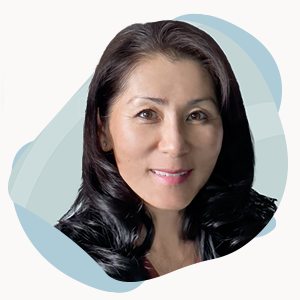I’ve worked in many roles and organizations throughout my career, but the one thing that remains constant is the power of human relationships. The connections I’ve made have given me guidance, fueled my motivation, and supported my goals. When asked about my career trajectory, I am reminded of the important mentors from whom I learned the ropes, and the mentorship I try to provide in turn.
Mentorship isn’t something I take lightly. By mentoring those around us, we can help develop, retain, and build diverse talent, which we know enhances success, productivity, and satisfaction in the workplace. As with most of the important things in my life, it’s something I’ve built a bit of a process around. At the end of the day, I get a lot out of being a mentor, and I’d like to share my model so we can all become better mentors and mentees.

The virtuous cycle of mentoring
Mentorship can open doors and inspire, support, and encourage people realize their full potential. Mentors can make a profound difference in their mentees’ lives and, in turn, strengthen our communities and economy to drive social change.
But mentoring is a powerful tool because it not only benefits mentees, it also profoundly impacts mentors. Mentors have reported increased job satisfaction, increased positive self-image, greater knowledge, and a deeper understanding of different parts of an organization.
Rules of the road for mentors and mentees
I created a process for mentoring to ensure that my mentees and I get the most out of our relationship. The following steps aren’t one-size-fits-all and can be adapted to different types and sizes of organizations. The one prescription I make is that mentorship needs to be intentional on both ends—whether it’s formal sessions or casual chats, it’s a form of mentorship.
- If you don’t have a mentor, find one or more. The relationship doesn’t have to be formalized—in fact, an informal arrangement feels more natural, and works best for me and my style. Whichever way you arrange it, it should be a meaningful, trusting relationship.
- As a mentor, actively listen and be ready to help. As a mentee, be honest with yourself and your mentor, and share openly.
- Have a sense of what you want to get out of the relationship. Be intentional about its purpose and your respective expectations.
- Provide meaningful feedback. Be open to feedback, even when it’s uncomfortable, as it will help in the long run. Go into the relationship with an open mind.
Mentoring circles
While I have great one-on-one mentoring relationships, I have also found a small, intimate group of mentees to be beneficial. For example, I noticed there was a gap in female leaders in mid- to upper-level management (the broken rung dilemma). It probably doesn’t need repeating, but study after study shows that greater diversity leads to stronger financial results. For instance, McKinsey’s research shows that companies with more ethnic diversity outperform less diverse industry peers by 36%, and those with greater gender diversity outperform by 25%. So, I sought out a small group of up-and-coming female leaders and established a mentoring circle to see how I could help.
Some of the things I’ve done to establish meaningful mentoring circles include:
- Partnering with internal groups that support underrepresented minorities and other-abled people
- Keeping the circle small (six or less)
- Creating a safe and trusted space within the circle and encouraging the group to openly discuss topics and situations that matter to them
- Establishing a meeting cadence and asking for a commitment of up to one year
- Some sample discussion topics:
- Why did you join our company, and what makes you want to stay?
- What challenges do you face in advancing your career, and what help do you need?
- How to have tough conversations with managers about meaningful work, compensation, and new opportunities.
- Owning personal career development.
- Personal brand perception versus reality, and the importance of constructive feedback and development.
I’ve also found it useful to invite other executives to join the circle as guests so they can share their experiences and advice.
Personal thanks
When all is said and done, the relationships we develop throughout our careers are what carry us through to the next stages of our lives. I’ve been fortunate to have strong mentors who have helped me stretch my professional and personal goals and achievements. I am certain that I would not be where I am today, working for a top Fortune-ranked cloud company, had it not been for my amazing mentors.
Would you like to explore the possibilities of mentoring with people like Jae? Check out our career opportunities and start building priceless professional connections.
Article originally published on Forbes
